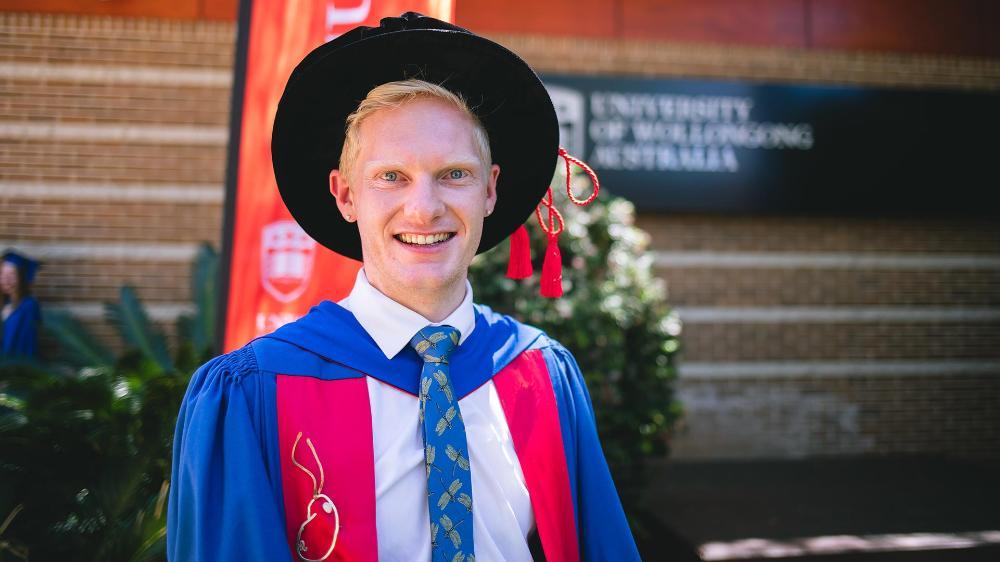November 6, 2019
Using chemistry to protect an ecosystem teeming with life
Dr Darren Koppel’s studies take him to Antarctica
Working in Antarctica for three months has been a career highlight for Chemistry PhD graduate Dr Darren Koppel.
“I want to provide people, politicians, NGOs, and companies with the tools they need to make better decisions about the environment,” he said.
“I want my science to inform good decisions,” he said.
His PhD looked at assessing the impact of humans on the Antarctic coastal marine environment.
It’s a unique research environment.
“It’s an ecosystem that is teeming with life in contrast to the starkness of the terrestrial environment,” Dr Koppel said.
“I’m in a field that investigates the toxicity of pollution in the environment. The field borrows science from chemistry, biology, and toxicology to uncover the tolerance of organisms to pollution so we can come up with relevant guidelines to protect the environment.
“Antarctica is a dedicated natural reserve. We’ve agreed to look after it and share what we learn. The collaborative spirit of Antarctica is really quite exciting, all of our data needs to be openly available to anyone.”
That has worked in the favour of Dr Koppel.
Working with UOW and the CSIRO, Dr Koppel validated a chemical monitoring tool to measure metal pollution directly in the Antarctic marine environment and developed a process to then assess how much of a risk the pollution posed to that ecosystem.
Dr Koppel cultured Antarctic microalgae and used lasers to measure their health in the presence of increasing pollution.
“My research found that historical metal pollution does not pose much of a risk to the marine environment, but we’re still investigating soils and sediments,” Dr Koppel said.
“Through this project, we’ve been able create and validate tools that will empower national Antarctic programs to assess the impact of their pollution.”
During his PhD, Dr Darren Koppel was inspired to discover there was a time when Australia was seen as a world leader in addressing international environment problems.
“Antarctica is a shining example of everyone getting together to work towards a common goal,” Dr Koppel said.
Up until the 1990s, researchers were going into Antarctica without any agreement to protect the environment, leaving behind a legacy of historical waste. France and Australia were the first to push for a protocol comprehensively protecting the Antarctic environment, which came into force in 1998. About 44 countries have now signed onto it, which dedicates Antarctica as a natural reserve devoted to peace and science. Since the protocol came into force, researchers ship all of their waste back to their nation of origin, and process it there.
Unfortunately, much of the historical waste remains in Antarctica.
“For a long time, the world treated the ocean as a giant bin, you only have to look at the amount of plastic debris that ends up in it,” Dr Koppel said.
There have been small examples of remediation, with Australia again leading the way, cleaning up a disused tip site outside of Casey Station and shipping the waste back to the mainland.
Dr Koppel said environmental factors also need to be considered when remediating sites in Antarctica, and an extension of his research would help nations to determine whether a clean-up will do more harm than good.
“Sometimes digging up the pollution can cause more harm to the environment than leaving it be,” he said.
“If it’s locked away in sediments or ice then it may be better to leave it. But we need the right tools to make those decisions.”
His three-month trip to Antarctica was more productive than he had hoped and confirmed that he’s on the right track.
“I decided to dedicate myself to this field because I believe it gives practical solutions to the challenge our increasing population and industrialisation poses to the environment,” Dr Koppel said.
“We can live and work sustainably alongside nature if we understand and limit our environmental impact.”
